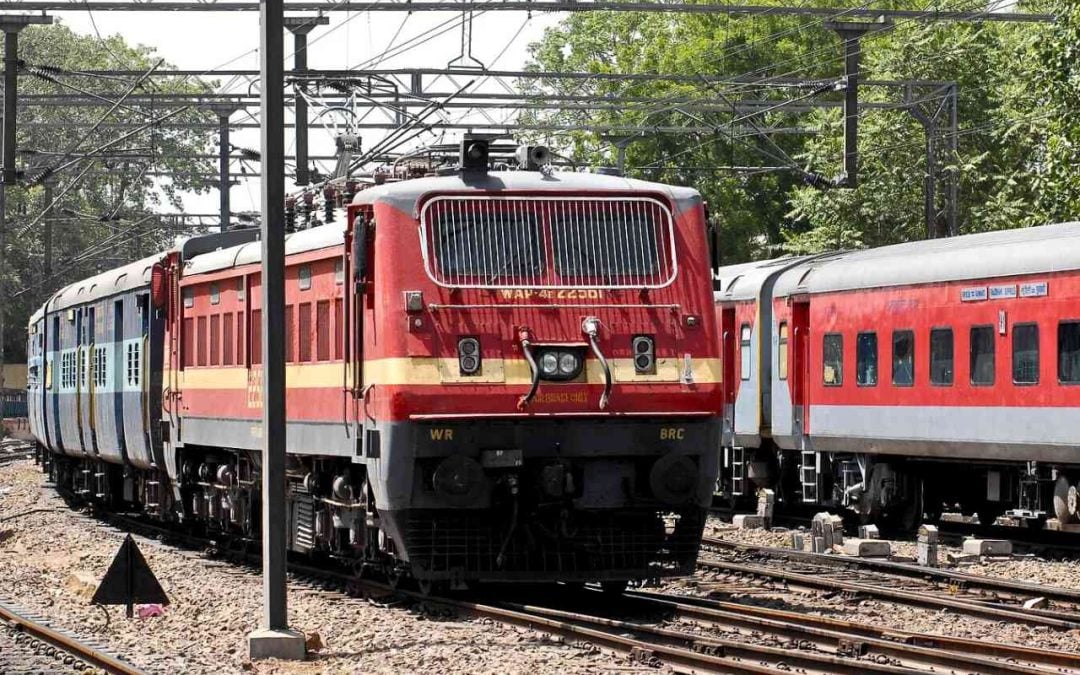The stock’s sharp correction contrasts with improving execution, expanding diversification into new sectors, and steady bidding momentum. Despite temporary margin pressures and a moderated order book, growth visibility remains strong, making the potentially attractive for long-term investors as fundamentals realign
India’s railways sector in 2025 is a vital transportation backbone, carrying over 7 billion passengers annually with a 6% growth and freight loading surpassing 1.6 billion tonnes. The sector’s revenue surged nearly 50% to Rs 75,215 crore for passengers, with freight earnings also rising. Capital expenditure is robust, focusing on infrastructure expansion, safety, and modern amenities. Electrification covers 98% of broad gauge tracks, boosting efficiency and reducing fuel costs.
With a market capitalisation of Rs 65,480.06 crore, the shares of Rail Vikas Nigam Ltd closed at Rs 314.05 per share, decreased around 1.58 percent as compared to the previous closing price of Rs 319.10 apiece.
Correction Opportunity
RVNL is trading nearly 36% below its February 2025 peak of Rs 501.55, despite recent steady project wins and expansion into solar, telecom, and overseas. With diversification gaining momentum and visibility on future growth improving, the current dip may present an attractive opportunity for patient investors.
However, the company’s order book has moderated from about Rs 1 lakh crore in Q1FY26 to Rs 90,000 crore in Q2FY26, split almost evenly between legacy railway projects and competitively won multi-sector contracts. With a strong FY26 bidding pipeline of Rs 75,000–80,000 crore and a realistic success rate of 10–12%, RVNL expects fresh inflows of Rs 8,000–10,000 crore, supporting steady medium-term growth momentum.
Execution Recovery
Moreover, the company has maintained its FY26 revenue guidance at Rs 21,000–22,000 crore. Management indicates a strong pickup in execution in Q3. For FY27, they are targeting at least 10% growth, supported by faster-turn projects, improving site activity, and steady inflows from recently secured contracts.
RVNL is steadily diversifying beyond traditional rail projects as policy shifts reduce nominated awards. The company is expanding into solar with battery storage, rolling-stock O&M, and metro maintenance to build new revenue pools. Additionally, annuity-like streams from multimodal logistics parks and HAM projects offer long-term visibility, with multiple MMLPs nearing operationalisation and HAM concessions providing 20–25 years of stable income.
RVNL delivered a mixed Q2FY26 performance, with revenue rising 6% to Rs 5,123 crore, reflecting steady execution. However, net profit declined 20% to Rs 231 crore. The results highlight stable topline momentum but near-term profitability challenges.
Rail Vikas Nigam Ltd (RVNL) is a government-backed infrastructure company focused on delivering railway, metro, and allied transport projects across India. Known for efficient execution and competitive bidding strength, RVNL is expanding into sectors like solar, telecom, and international markets, positioning itself as a diversified engineering and construction player with long-term growth potential.
Conclusion
Overall, RVNL’s sharp 36% correction from its peak appears more sentiment-driven than structural. Despite a softer order book and temporary execution hurdles, the company’s diversification, steady bidding pipeline, and improving revenue visibility strengthen its medium-term outlook. For long-term investors, the current discount may offer an appealing entry point as growth drivers realign and margins stabilise.
Written by Abhishek Singh
Disclaimer

The views and investment tips expressed by investment experts/broking houses/rating agencies on tradebrains.in are their own, and not that of the website or its management. Investing in equities poses a risk of financial losses. Investors must therefore exercise due caution while investing or trading in stocks. Trade Brains Technologies Private Limited or the author are not liable for any losses caused as a result of the decision based on this article. Please consult your investment advisor before investing.


